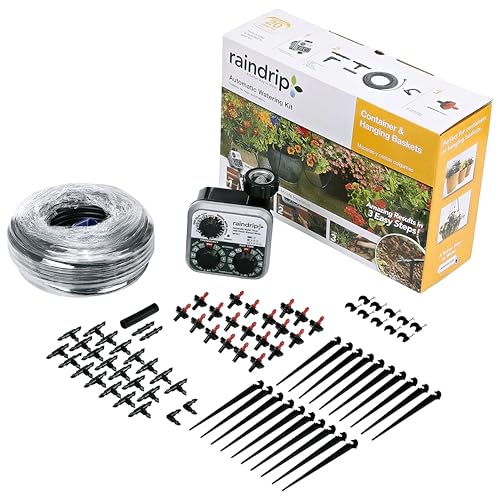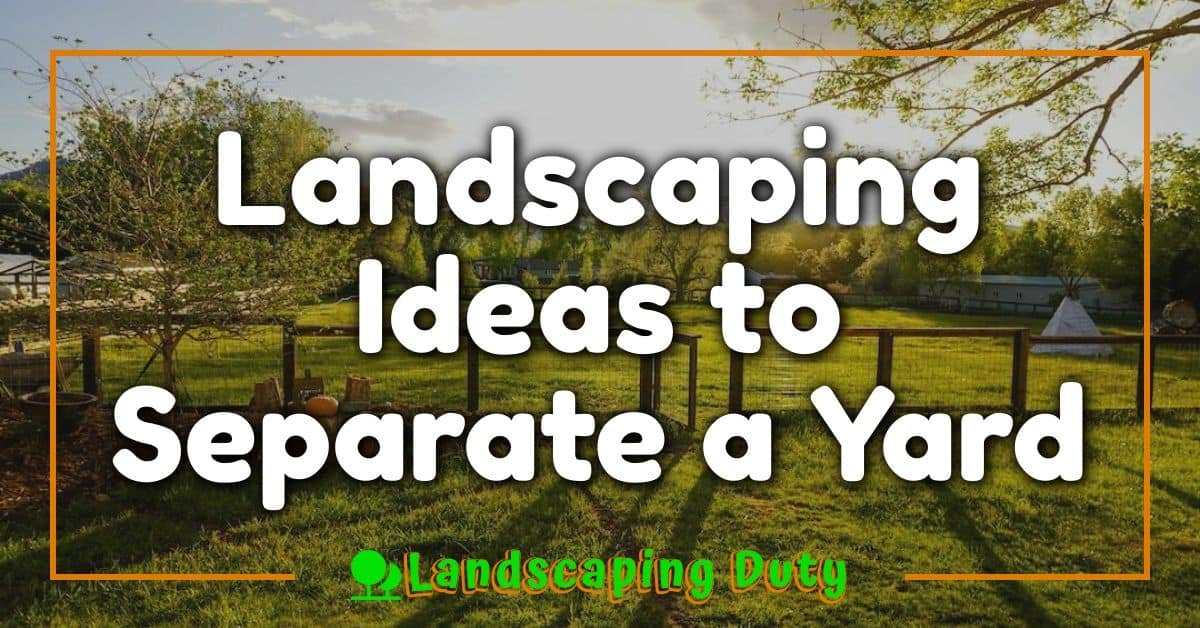Setting up a drip irrigation system can truly transform your garden. I remember the first time I installed one—it was simpler than I thought and made a huge difference in my plants’ health.

With the right setup tips, you can save water and ensure your garden thrives. In this article, I’ll share some of my favorite strategies to help you get started and make the most of your drip irrigation system.
Benefits Of Drip Irrigation Systems
- Water Conservation
Drip irrigation delivers water directly to plant roots, reducing evaporation by up to 90%. This efficient method ensures plants receive the exact amount they need.
- Enhanced Plant Health
Consistent moisture levels prevent plant stress and promote strong root systems. Healthy plants grow faster and produce higher yields.
- Weed Reduction
Targeted watering limits water availability for weeds. Fewer weeds mean less competition for nutrients and resources.
- Reduced Labor
Automated drip systems decrease the time spent on manual watering. This efficiency allows me to focus on other gardening tasks.
- Flexibility
Drip irrigation adapts to various garden layouts and plant types. Whether I have vegetable rows or ornamental flowers, the system meets diverse needs.
- Cost Efficiency
Lower water usage translates to reduced water bills. Additionally, minimal runoff decreases the need for fertilizers and pesticides.
- Disease Prevention
By keeping foliage dry, drip systems reduce the risk of fungal diseases. Healthy plants are less susceptible to common garden pests.
- Scalability
Drip irrigation systems can expand as my garden grows. Adding new plants or sections integrates seamlessly without major adjustments.
Planning Your Drip Irrigation Setup
I plan my drip irrigation setup to maximize efficiency and support my garden’s health.
Assess Your Garden’s Water Needs
I evaluate my garden’s water needs by considering plant types, soil conditions, and climate. For example, vegetables require more water than succulents, clay soil retains moisture longer than sandy soil, and arid climates increase evaporation rates.
Design An Efficient Layout
I create an efficient layout by mapping plant locations and positioning drip lines accordingly. I place emitters at each plant’s root zone and organize lines into zones based on similar water requirements, ensuring consistent moisture distribution.
Components Of A Drip Irrigation System
Understanding the key components ensures an efficient drip irrigation setup. Each part plays a specific role in delivering water effectively to your plants.
Drippers And Emitters
Drippers and emitters control the flow of water to each plant. They release water slowly, minimizing evaporation and runoff. Available in various flow rates, such as 0.5 GPH or 1 GPH, they cater to different plant needs. I choose drippers based on plant size and water requirements, ensuring each root zone receives adequate moisture. Additionally, adjustable emitters allow precise control, enhancing water distribution accuracy.
Filters And Regulators
Filters prevent debris from clogging the system. Common types include screen filters and sediment traps, which maintain clean water flow. Regulators manage water pressure, ensuring consistent delivery through the drip lines. I install pressure regulators to maintain optimal pressure levels, typically between 20-30 PSI, reducing the risk of emitter damage. Combining filters and regulators extends the system’s lifespan and ensures reliable performance.
Installation Process
Setting up a drip irrigation system involves several steps. I’ll guide you through the installation process to ensure optimal performance.
Setting Up The Main Lines
- Lay out the main tubing across your garden area.
- Measure and cut the tubing to fit your garden layout precisely.
- Connect the main lines to the water source using a pressure regulator.
- Secure the tubing with stakes every 10 feet to prevent movement.
- Use a manifold for larger gardens to distribute water efficiently across multiple zones.
Connecting Emitters And Accessories
- Attach emitters to the main lines at each plant’s root zone.
- Select emitters with appropriate flow rates for different plant types:
| Plant Type | Flow Rate |
|---|---|
| Vegetables | 1 GPH |
| Succulents | 0.5 GPH |
- Install filters to remove debris and prevent clogging emitters.
- Incorporate shut-off valves to control water flow in each zone.
- Add drip connectors and tees to manage branching lines.
- Test each connection to verify proper water distribution and make necessary adjustments.
Maintenance Tips
Keeping your drip irrigation system in top shape ensures efficient water delivery and long-lasting performance. Here are some essential maintenance practices:
Regular System Inspections
I inspect my drip irrigation system weekly to catch issues early. During each check, I:
« Stunning Front Yard Ideas with Fountains to Elevate Your Curb Appeal Soil Testing Kits: Why They Matter for Thriving Gardens »
- Check for leaks: Look for wet spots or drips along the tubing.
- Inspect emitters: Ensure each emitter releases water properly without clogging.
- Examine connections: Verify that all fittings and connections remain secure.
- Assess tubing condition: Look for cracks, splits, or any signs of wear and tear.
- Monitor water pressure: Confirm that the pressure regulator maintains consistent flow.
Regular inspections prevent minor problems from escalating, maintaining optimal system efficiency.
Cleaning And Replacing Parts
Cleaning and replacing parts keeps the system functioning smoothly. I follow these steps:
- Flush the system: At least once a season, I disconnect the main line and run water through to clear debris.
- Clean filters: I remove and rinse filters monthly to prevent clogging and ensure clear water flow.
- Replace emitters: Every year, I check emitters for blockages and replace any that show signs of damage or reduced performance.
- Swap out tubing: I replace sections of tubing that exhibit cracks or excessive wear to maintain water distribution.
- Update regulators: If water pressure fluctuates, I install a new regulator to stabilize the flow.
Consistent cleaning and timely replacement of parts extend the lifespan of the drip irrigation system and enhance its reliability.
Choosing The Right Drip Irrigation System
Selecting the right drip irrigation system ensures efficient water delivery tailored to my garden’s needs. Here’s how I approach the selection process:
Assessing Garden Size and Layout
I start by evaluating my garden’s size and layout. For small gardens, a basic drip system with main lines and emitters covers the area effectively. Larger gardens may require multiple zones and additional components to ensure even coverage.
Evaluating Water Pressure and Source
Next, I check my water source and pressure. Most drip systems work best between 20-30 PSI. If my water pressure exceeds this range, I’ll install a pressure regulator to protect the system from damage.
Considering Plant Types and Water Requirements
Different plants need varying amounts of water. For example, vegetables like tomatoes require more frequent watering compared to drought-tolerant succulents. I select emitters with appropriate flow rates to match each plant’s needs.
| Plant Type | Recommended Emitter Flow Rate (GPH) |
|---|---|
| Vegetables | 1.0 |
| Shrubs | 0.5 |
| Flowers | 0.7 |
| Succulents | 0.2 |
Choosing Between Pre-Holed Kits and Custom Systems
I decide between pre-holed kits and custom systems based on flexibility. Pre-holed kits offer ease of installation for standard layouts, while custom systems let me tailor the setup for unique garden designs and specific plant placements.
Budget and Cost Efficiency
I consider my budget by comparing initial setup costs and long-term savings. Drip irrigation systems range from $50 for basic kits to over $300 for advanced setups with timers and filters. Investing in quality components reduces maintenance costs and extends system longevity.
Planning for Scalability and Future Expansion
Lastly, I plan for future garden expansion. Selecting a system that can be easily expanded allows me to add more zones or features without overhauling the entire setup.
Conclusion
Adopting a drip irrigation system has made a huge difference in how I manage my garden. The simplicity and effectiveness have exceeded my expectations. Watching my plants thrive while using less water is incredibly satisfying.
If you’re considering updating your watering routine, drip irrigation is a fantastic option. It’s flexible easy to maintain and brings long-term benefits. Give it a try and see your garden flourish with less effort.
















